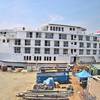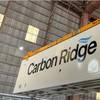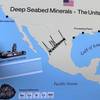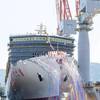Ship IoT Tech Enables Navigation Safety
The airline industry has long employed flight data to monitor navigational and operational practices for evaluation and feedback to pilots using a system called Flight Operations Quality Assurance (FOQA). Now a similar concept is coming into the shipping industry. Danelec Marine, a well-known manufacturer of VDRs and ECDIS products, this month unveiled a new Bridge Operational Quality Assurance (BOQA) system. To learn more, we talked with Hans Ottosen, CEO of Danelec, a Danish electronics company.
Please give a little background on Danelec Marine?
Danelec Marine was one of the first companies to bring to market VDRs to meet the original IMO carriage requirements in 2002. Since then, we’ve supplied more than 6,000 VDRs and S-VDRs. In recent years we broadened our marine portfolio with ECDIS products and a universal ship Internet of Things (IoT) platform, which we call DanelecConnect.
What led you to develop the BOQA concept?
In 2013, the Oil Companies International Marine Forum (OCOMF) submitted a paper entitled The Proactive Use of Voyage Data Recorder Information to the IMO. The paper called for transmission of data from VDRs (excepting voice recordings and radar images) over the Internet to shore for analysis. This subset of VDR data would be small enough to facilitate cost-effective ship-to-shore transmission over satellite channels, thereby giving the potential for 24/7 monitoring.
Shipping companies could auto-analyze the data against established standard operating procedures (SOPs). The OCIMF paper identified specific examples of parameters, including minimum depth beneath the keel, maximum rate of turn or rudder angle at full speed, compliance with routing requirements and following the approved voyage plan. The OCIMF-proposed system would provide alerts to shore management if non-conformances are identified, and it would enable the shipping company to provide feedback to the ship’s master and navigation officers as a learning experience to avoid future mistakes and enhance safety.
Our new BOQA is similar in concept to what was envisioned in the OCIMF paper six years ago. It’s a scalable cloud-based event reporting, analysis and feedback solution, which uses data from the ship and analytical tools to identify deviations from operational parameters.
What are the key elements in your BOQA offering?
A key enabling technology underpinning BOQA is DanelecConnect, a shipboard hub that collects data from the VDR and other data sources. Its open architecture accepts serial, digital and analog data without special custom interfaces. With DanelecConnect, a ship can collect and transmit hundreds or even thousands of data sets via satellite to Danelec’s cloud-based server ashore for less than a dollar per day in airtime costs. An API interface allows the data to be extracted from the Danelec server into the BOQA software, which uses advanced analytical tools to record and visualize shipboard events.
Can you give us an idea of how the BOQA would work in typical applications?
BOQA is basically a decision-support tool designed to enhance maritime safety and enable proactive decision-making in bridge operations by automatically recording and analyzing shipboard events.
The BOQA platform encompasses six broad event categories. They are navigation events, AIS events, compliance events, weather events, motion events and customized safety events. The system can be set up for daily reports and/or instant alarms for each event type.
Taking navigational events as an example, reports include breaches of cross-track error parameters and safety corridors, departures from the ECDIS active route, penetration of no-go zones, deviations from speed and heading in the active route and unscheduled stops and starts. AIS event reports can reveal incidents of collision risks from CPA and TCPA. Weather events can include high winds and heavy weather on the ship’s route. Motion events include list, roll, rate of turn and transverse accelerations.
The shipping company can use the actionable BOQA reports to create a formal proactive approach to operational risk management in ship navigation practices and procedures, with a feedback loop to the ship’s master to help avoid future accidents and improve navigational safety of the ship.
What’s the status of BOQA now? Do you have any installations? What’s your plan for rolling it out to the market?
We are currently running initial tests on vessels of five different shipping companies with positive results. Feedback from these ship trials will help us fine-tune the package.
Some of our customers have also suggested that we include a profiling of each officer based on the BOQA data in order to customize the ongoing training the individual officer.
Importantly, we’ve built in a capacity for the system to “learn.” Thus, new types of unforeseen events can be developed by applying machine learning and artificial intelligence methods.










